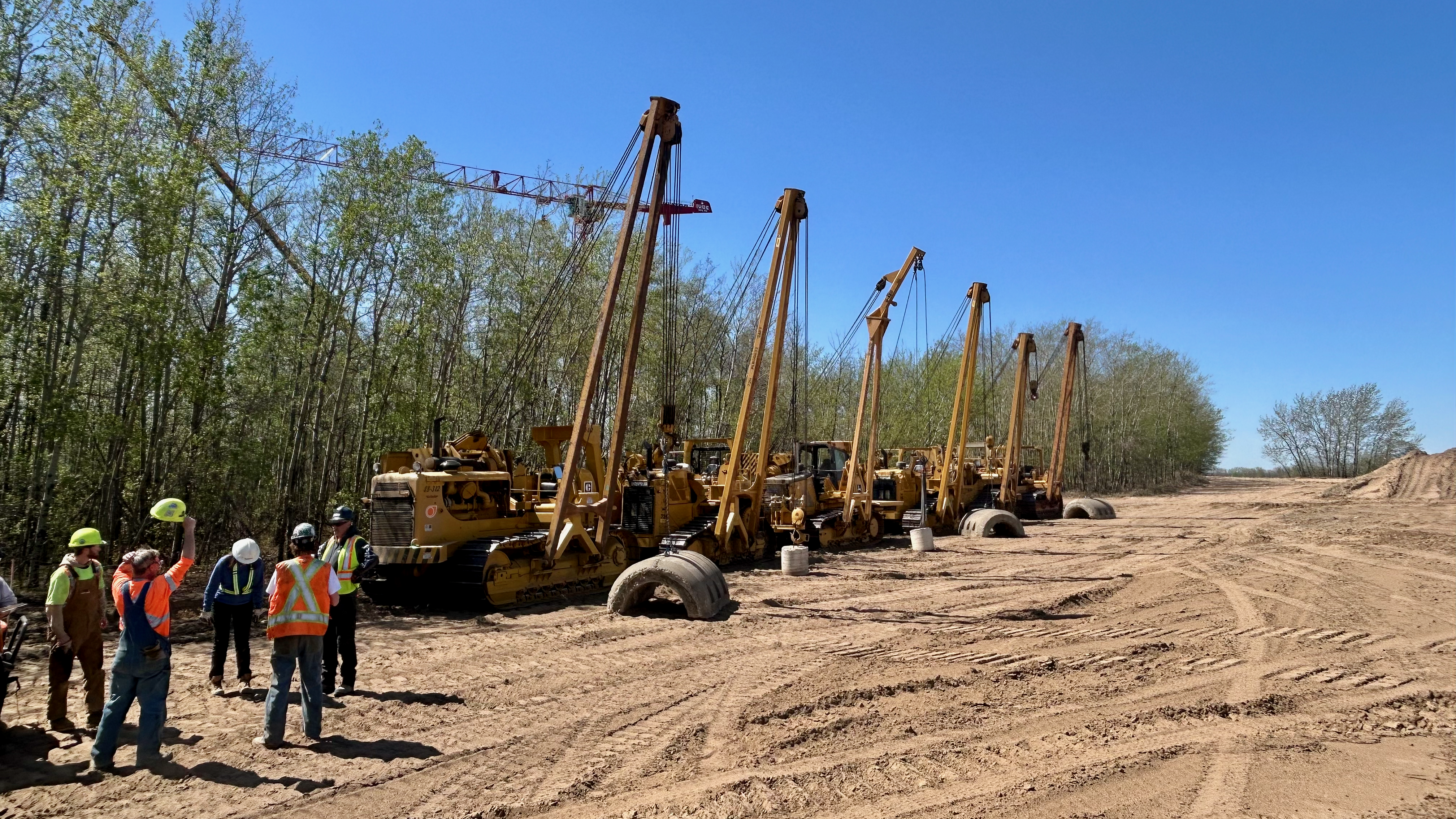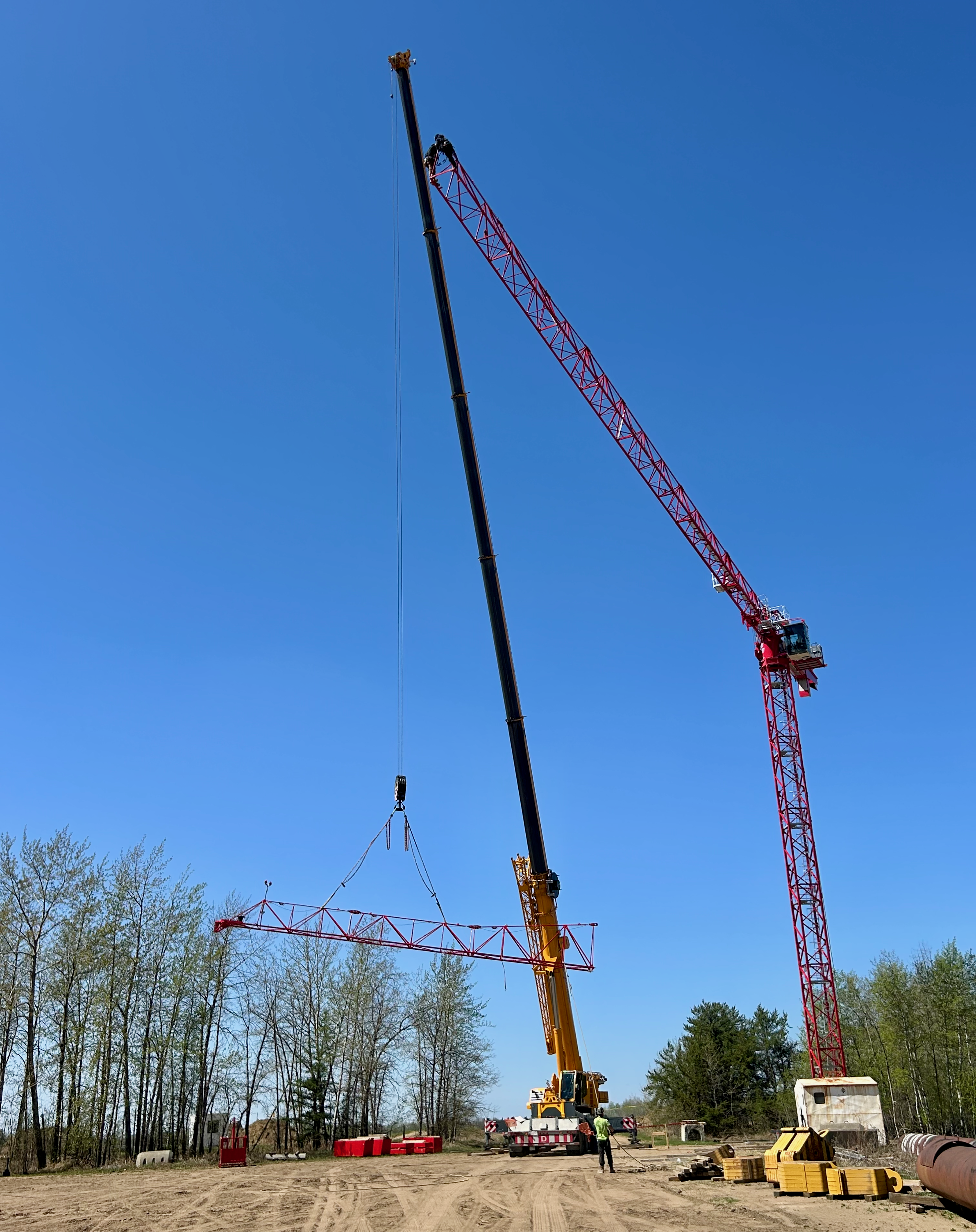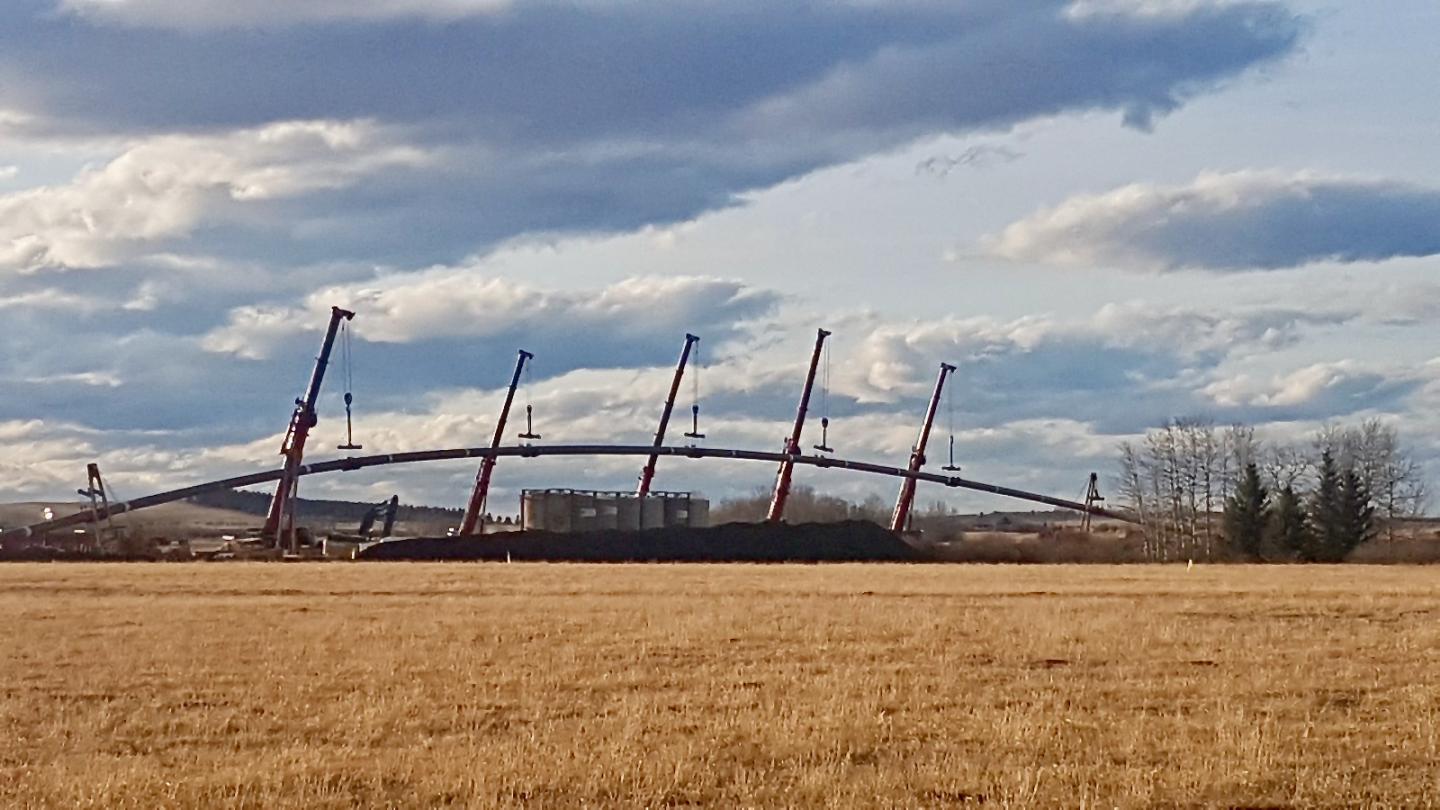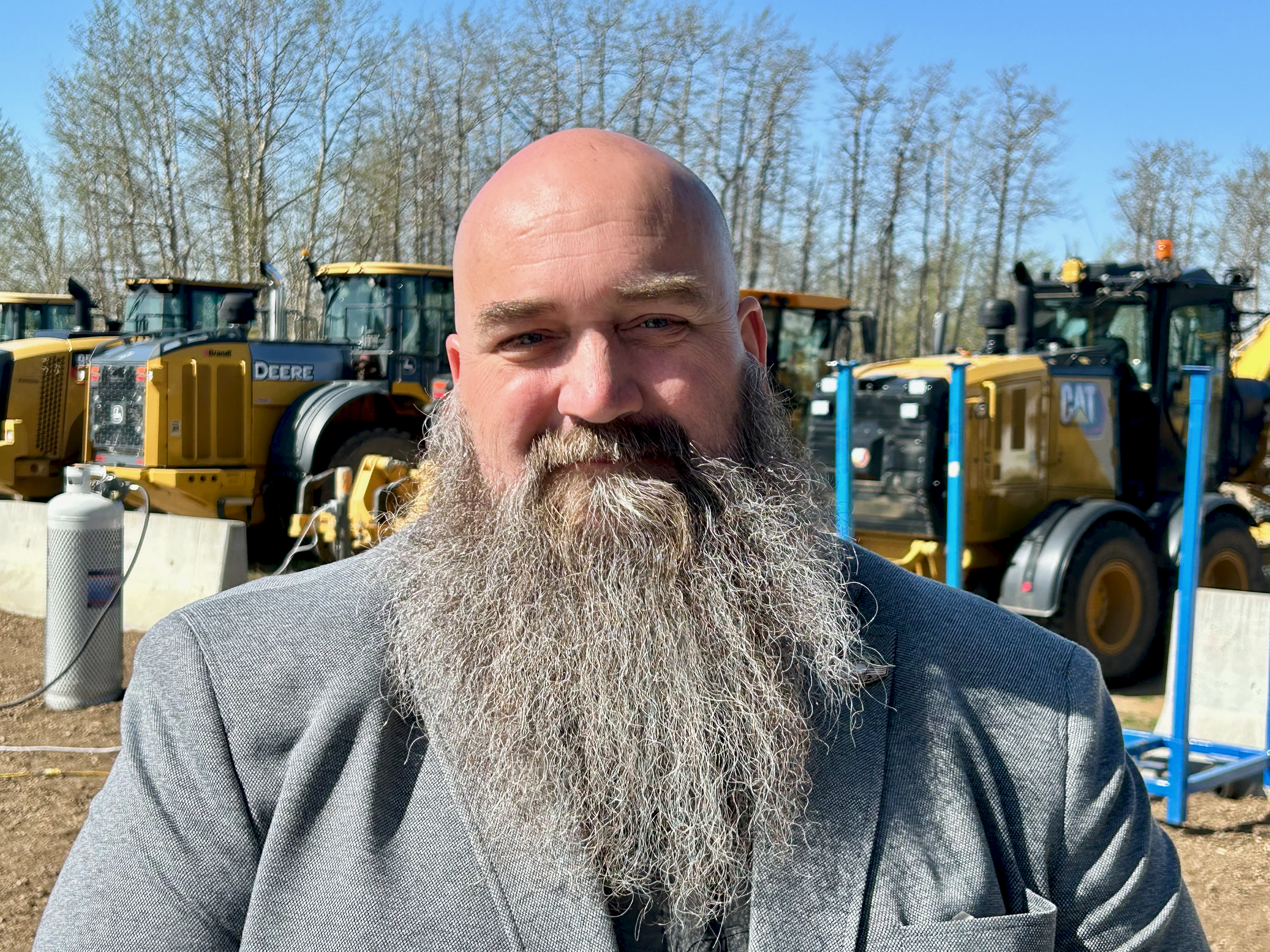Having learned to drive a tractor before he was old enough to shave, Allan Dakin started operating heavy equipment for a construction company around the same time he obtained his driver’s license.
“I got into construction when I was 16,” says Dakin, who was born in Lac La Biche, Alta. but moved to Fort McMurray in the 1970s when his father got a job at the Great Canadian Oil Sands project, which is now Suncor Energy’s Base Plant.
“Because I was a farm boy, I was comfortable around those machines. But I still had a good mentor who taught me a lot.”

Pipe-layers or “side-booms” at IUOE Local 955’s Budd Coutts Apprenticeship and Education Centre near Edmonton. Photo for the Canadian Energy Centre
Dakin is now guiding the next generation of operators as an instructor at the Budd Coutts Apprenticeship and Education Centre run by the International Union of Operating Engineers (IUOE) Local 955.
Last spring it became the first union to receive Alberta government funding for skills training, with $350,000 announced to support a mobile crane operator apprenticeship program. That was expanded in the 2025 provincial budget with $15 million granted to union training providers over the next three years.
Now the centre, located about 45 minutes northeast of Edmonton, has expanded its training program for operators of crucial pieces of heavy equipment called pipe-layers thanks to funding from the Pathways Alliance.
The industry group represents six of Canada’s largest oil sands producers.
Pipe-layers, also known as side-booms, are bulldozers with a crane attached to the top used to pick up, carry and place lengths of pipeline.
“Pipe-layers or side-booms are what we use to build pipelines. That’s not just oil and gas pipelines. They are used for water and sewer lines as well,” says Chris Flett, business manager for Local 955.
“They bring the fibre optic cables to your homes. They are an important piece of equipment to build communities and industries. If you want to build the country and your communities, all these pieces of equipment we are operating out here are necessary and important.”
Local 955 is continually looking for new partners to grow its training capacity, Flett said.
“We are increasing our programs and adding to our offerings because we see huge shortfalls in the future,” he said.
“If we don’t do it, we are going to have a really hard time getting projects off the ground in this country.”
Pathways Alliance president Kendall Dilling said its sponsorship will help industry find the skilled workers it needs for the coming decades.
“Local 955 has an excellent track record of supporting our industry, retaining a high percentage of apprentices in their program, fostering strong relationships with Indigenous workers and communities as well as providing skilled labour on major projects,” Dilling said.
The course to train pipe-layer operators takes three weeks and costs $3,000.
The Canadian Energy Centre spoke to Cole Miller, who has worked on pipelines for the past 11 years, one week into the pipe-layer operator course.
“I’ve worked around side-booms while I’ve worked on pipelines but this my first time on this piece of equipment so I’ve been getting used to the machine and the controls,” said Miller, who lives in Westlock County, a rural area north of Edmonton.
“We have really good instructors, they have been awesome. It was a little intimidating at first but you get lots of one-on-one time with them.”
The centre has also expanded its course offering to include training on a tower crane erected at the centre’s 160-acre work site, supported by both the provincial and federal governments.

Tower crane at IUOE Local 955’s Budd Coutts Apprenticeship and Education Centre near Edmonton. Photo for the Canadian Energy Centre
“This is the first tower crane in the Prairies solely dedicated to training and instructing operators,” Flett said.
“Tower crane operators, in particular, are one of the most in-demand trades and one of the most technical. If you want to build the cities of tomorrow, the skyline is built with tower cranes.”
Dakin, who also worked in the oil sands in his 40-plus years of operating equipment, sees a bright future for Miller and other operators.
“Working with the students is very fulfilling because you see their excitement and willingness to learn. I really enjoy giving back what I’ve picked up over the years,” said Dakin, who has instructed students at the centre on everything from excavators to graders to haul trucks to pipe-layers.
“It’s so important to make yourself more diverse by training on different equipment because more doors open when you have more skills and knowledge.”
The unaltered reproduction of this content is free of charge with attribution to the Canadian Energy Centre.

